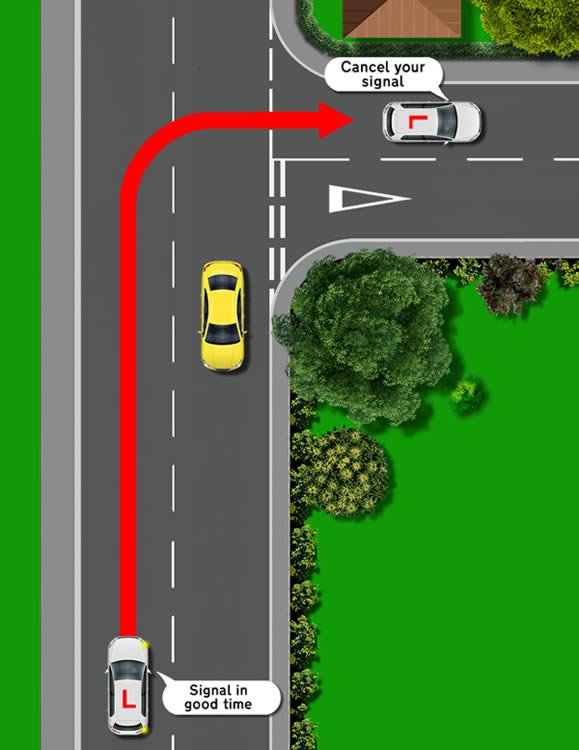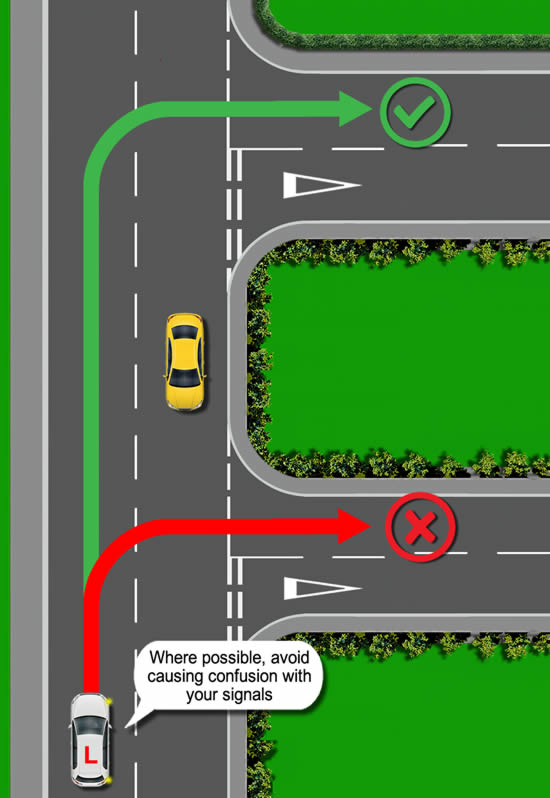When making a right turn, you’ll be turning from a major road, onto a minor road. When signalling, it’s important that you use the MSPSL routine, signal in good time and avoid creating any confusion.

Before making a right turn, we need to let other road users know our intentions. We do this by the use of signals. Signal in good time to allow other road users time to react.
It’s equally important not to cause confusion by leaving the signal on after the turn. Our car’s indicators are designed to self-cancel once we straighten the wheel after a turn. However, sometimes signals remain active.
If you’re on a driving test, the examiner will expect you to check this and to manually cancel the signal if it remains active. A driving test can easily be failed if a test candidate leaves a signal on for too long.
Confusing Signals
Along with leaving a signal on after a turn, signals that cause confusion can occur if you apply them at the wrong time, prior to the turn.

Though you should signal in good time, it’s also important to signal at the right time. Signalling too early is likely to cause confusion, where drivers are expecting you to take another road.
Sometimes however, if roads are very close together, this is unavoidable. It’s often best to signal with the risk of confusion, rather than signalling very late, which could have dangerous consequences.
Should You Always Signal When Making a Right Turn?
It is recommended to always signal when making a right turn, regardless of whether there are other road users. There may be a pedestrian, cyclist or other road user that you may not have seen.